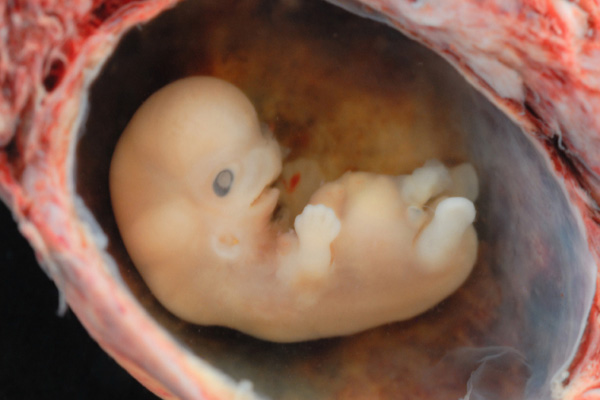paging herr dr. frankenstein ? paging the good herr dr. ?? paging dr. victor frankenstein .... (hear in back ground ) mumbles ? mumbling than grrrrrrrrrrrrrrr grumpf ....crunch crack snapple punch !@#$%^&*( SHOOOOOOOOOOOOOOT it fucking SHOOT ! )(*&*(+_)@#$^%$# KILL IT ....pop snap $%^&&$@#$%^&* kill the fucking thing !!! ... fire .....quick get FIREEEEEEEEEEEEE lol fucking kooks ..."they" Never fucking EVER ...factor in ......... evil huh until "their " fucking "critter" is snap~in at "their" ...asssssses :o
VOA
Scientists worldwide are creating bizarre human-animal hybrids
that could wreak havoc on society. In the past ten years alone,
unforgettable advances in the field of genetic modifications have left
researchers and on-lookers stunned.
Nowadays, it is possible for a couple of university-age students
to concoct new life forms in the comfort of their own basement.
Regrettably so, laws have not been able to keep up with the pace at
which scientists have been toying around with their creations.

In turn, the entities being created are not at all illegal
but by all means could pose a risk to society by and large. There is no
telling what may happen if these life forms are allowed to mate. Still,
eagerness can be seen in the eyes and minds of scientists on a global
level just waiting to unleash their next creation to the world, that all seemed liked fantasy just a short time ago.
To give a concrete example, scientists have made mice with
an artificial human chromosome “in every cell of their bodies”. Such an
act is being praised as a “breakthrough” which may lead to different
cures for a wide scope of disease. As reported by Lifenews.com, University of Wisconsin researchers have had much success by transferring cells from human embryos into the brains of mice. These very cells began to grow, and in time made the mice more intelligent.
The mice showed that they were able to solve a simple maze and learn conditioning signals at a more enhanced level than if compared to before their transformation. Critics are quick to question whether a practice of injecting parts of humans in animals carries more benefits than risks.
Even now it is apparent that growing human organs inside of
animals is not science fiction, but pure reality. Japanese scientists
have started using pigs to grow human organs inside of them. The entire
growth process takes up to 12 months to complete.
Their main goal is to add onto the amount of organs available for medical procedures according to an Infowars.com write up about the topic. However, this is no basement operation as the Japanese government is figuring out guidelines for the embryonic research initiative.
Thetruthwins.com is quick to point out that once a human
organ has begun to grow inside of a pig, that pig is no longer 100
percent pig. If that can be said to be true, then the human organ that
grows inside of the pig cannot be
perceived as 100 percent human after it developed inside of another
animal. Recipients of such organs will be letting human-animal hybrid
parts be put inside their bodies.
The consequences of creating such hybrids could pose a
hazard to communities near and far. However, the perhaps more unsettling
part is realizing that it is not known what is to be predicted should
the hybrids become uncontrollable.
What is even more daunting is that most countries do not
have laws against creations of this kind, leading people to produce
these entities freely. Additionally, no punishment is set in place
should the living thing become a walking disaster.
It is believed that genetically tweaking animals to grow
human parts is just another way of corrupting nature. Back in 2011, the
Daily Mail reported on UK scientists creating “more than 150”
human-animal hybrid embryos and very few readers got upset over this.
Other examples have been noted of in a Slate article, such
as packs of humanized-milk producing goats, an anal sphincter being
placed into a mouse, and doctors constructing a human immune system made
for animals. Still, these are just the projects that are known about.
There may be other experiments underway that are off the radar.
Human-animals hybrids are possible, but it leaves people debating on whether the benefits truly outweigh the risks involved.



No comments:
Post a Comment